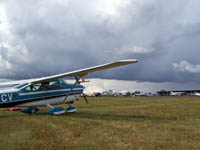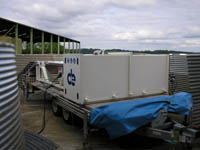CSIP-Convective Storm Initiation Project
Introduction
With the expected increase in the frequency, magnitude and effects of extreme weather events due to global warming, it has become crucial for governments to be able to plan for both the short and long-term consequences of these events. In particular, there is a pressing need to issue suitable and timely warnings where imminent danger to population and infrastructure is expected, such as in the flooding of Boscastle in August 2004.
The Convective Storm Initiation Project (CSIP) was set up to improve the spatial and temporal accuracy of forecasting of high precipitation events, by making measurements on scales specifically relevant to model development. Since the accuracy of existing forecasts was greatly dependent on the success of the forecast of the initial storm development, CSIP targeted the main mechanisms thought to be precursors of convective storms. The NERC Centre for Atmospheric Sciences Universities Facility for Atmospheric Measurement (FGAM) allowed a comprehensive but broad_based approach, covering all stages of storm development. Whilst modelling successes could help to refine the models, failures were equally important in identifying the processes of most relevance to forecasting.
A wide range of groups participated in CSIP. The FGAM contribution came through the Universities of Aberystwyth, Bath, Leeds, Manchester, Reading and Salford. Also involved were the United Kingdom Meteorological Office, the Institut für Meteorologie und Klimaforschung from Universität Karlsruhe in Germany.
The Centre for Atmospheric Science in the School of Earth, Atmospheric and Environment Sciences contributed both ground-based and airborne measurements through the use of a UHF wind profiler and the Cessna 182J.

